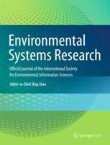A hierarchical analysis of ecosystem classification with implementing in two continental ecoregions
The ecosystem classification of land (ECL) has been studied for a couple of decades, from the beginning of the perfect organism system “top-down” approach to a reversed “bottom-up” approach by defining a micro...

